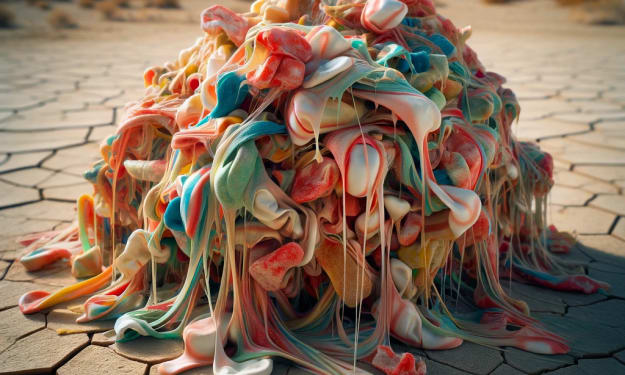MDF Board Finishing Techniques: Achieving A Smooth And Professional Look
MDF Board Finishing Looks
Medium-density fibreboard (MDF) has become a popular material in the construction and manufacturing industries. It is widely used to make furniture, cabinetry, flooring, and decorative items. However, MDF board can present challenges when it comes to finishing because of its porous surface and tendency to absorb moisture. Achieving a smooth and professional look requires careful consideration of the finishing techniques used.
In this article, we will explore some effective MDF board finishing techniques that you can use to achieve an exceptional finish on your projects. Whether you're a seasoned woodworker or just starting out with MDF boards, we'll provide tips and tricks that will help you create a flawless finish that is both durable and aesthetically pleasing.
Preparing The Surface:
Sanding
Sanding and filling imperfections are essential steps when preparing the surface of an MDF board for finishing. Sanding smooths out any rough spots, creating a uniform surface that will take paint or finish more evenly. It is important to sand with progressively finer grits of sandpaper, starting with 80-grit and working your way up to at least 220-grit. This process can be time-consuming but it is worth the effort as it ensures a perfect finish.
Filling Imperfections
Filling imperfections involves using a wood filler to fill in any cracks, dents or holes on the surface of the MDF board. After the filler has been applied and cured, it needs to be sanded down until it is level with the surrounding area. Failing to do this can result in an uneven finish when you apply paint or finish. The key here is patience as filling and sanding require several applications before achieving a perfect result. By taking these extra steps, you can achieve a smooth and professional look that will last for years to come.
Priming And Painting:
Priming and painting are essential steps in achieving a smooth and professional look for MDF board finishing. Choosing the right products is crucial to ensure that the surface will be properly prepped and painted. When it comes to primers, there are two main types: oil-based and water-based. Oil-based primers provide better adhesion, stain-blocking, and protection against moisture, while water-based primers have less odor and dry faster.
When selecting paint for MDF boards, it's important to consider its sheen level. High-gloss paints offer excellent durability but show imperfections more easily than satin or matte finishes. Another factor to think about is the type of paint base - oil or latex. Oil-based paints are known for their durability but take longer to dry and require mineral spirits for cleanup. On the other hand, latex paints have a shorter drying time, and easy clean-up with soap and water, but may not be as durable as oil-based options.
Staining And Varnishing:
Staining and varnishing are essential techniques for enhancing the natural grain of MDF board. These processes help to create a smooth and professional look that is both durable and aesthetically pleasing. With staining, you can choose from a variety of colors to match your desired style or theme. However, it's important to select the right type of stain based on the type of wood you're working with.
Varnishing, on the other hand, adds an extra layer of protection against scratches and moisture damage. It also helps to bring out the natural color and texture of MDF board while providing a glossy finish. When applying varnish, ensure that you use a high-quality brush or spray gun for even coverage across all surfaces.
Adding Texture:
Distressing and whitewashing are two popular techniques used to add texture and character to MDF board finishes.
Distressing
Distressing involves intentionally damaging the surface of the board to create a worn, vintage look. This can be achieved through sanding, scraping, or hammering the surface of the board. The end result is a unique finish that adds depth and visual interest to any project.
Whitewashing
Whitewashing, on the other hand, involves applying a thin layer of white paint over the surface of the MDF board. Once dry, you can lightly sand away some of the paint to create a subtle weathered effect. This technique works particularly well for creating shabby-chic or farmhouse-style finishes.
Both distressing and whitewashing are versatile techniques that can be used in combination with other finishing methods such as staining or painting. When applied correctly, they can transform a plain MDF board into an eye-catching statement piece that will add style and character to any room in your home or office.
Conclusion:
To achieve a professional finish on your MDF board, there are a few tips to keep in mind. First, always sand the surface of your MDF before painting or staining it. This will help to remove any rough spots or imperfections that could mar the finished look of the piece.
Next, use high-quality paint or stain to ensure that you get an even and consistent finish. Cheap paints can leave streaks and uneven coloring, which can detract from the overall appearance of your project.
Finally, consider using a sealant or topcoat to protect your MDF from scratches and other damage over time. This will help to maintain its smooth and polished appearance for years to come. By following these simple tips, you can achieve a professional-looking finish on all of your MDF projects!
About the Creator
Muhammad Hassan
I have been a digital marketer for a long time, but digital marketing goes beyond my career. It has been close to my heart.
A prolific writer by day and avid reader by night,
Founder of Pakseos.com
Enjoyed the story? Support the Creator.
Subscribe for free to receive all their stories in your feed. You could also pledge your support or give them a one-off tip, letting them know you appreciate their work.







Comments
There are no comments for this story
Be the first to respond and start the conversation.